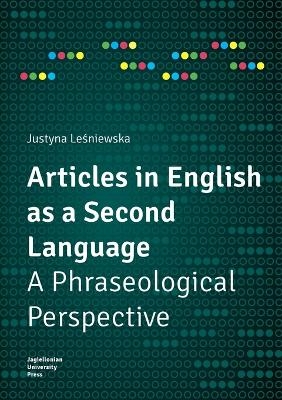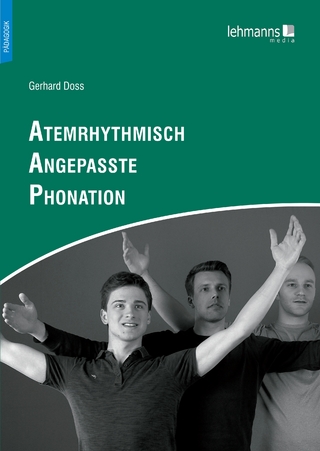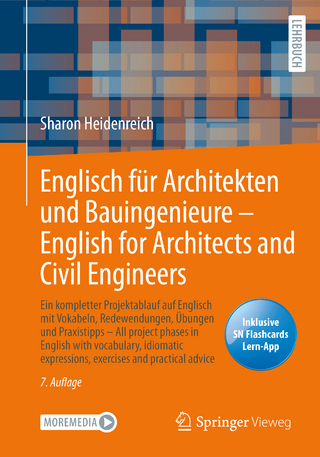
Articles in English as a Second Language – A Phraseological Perspective
Uniwersytet Jagiellonski, Wydawnictwo (Verlag)
978-83-233-4691-3 (ISBN)
The aim of this study is twofold: firstly, to provide an overview of research findings on the acquisition and use of articles in English as a second language; secondly, to investigate this issue from a phraseological perspective. The book also presents an examination of various linguistic accounts of the English article system with respect to their application to English language teaching. In view of the growing body of theoretical and empirical studies indicating that language use is to a considerable degree phraseologically motivated, this book argues for a connection between formulaicity and correct article use. This possibility is explored in two studies presented in the final chapter, which suggest that correctness in the use of articles depends on the frequency of the phrases in which they appear. These findings support the view that frequency-driven conventionality in language may play a role in the acquisition and use of articles in L2 English.
Justyna Leśniewska is assistant Professor in the Institute of English Studies at the Jagiellonian University in Krakow, earlier she worked at the Troy University (AL, USA) and at University of Northern Iowa (IA, USA). She is is the author of several scientific publications in the field of applied linguistics.
Introduction
Chapter 1
Articles: Descriptive approaches
1.1. Introduction
1.2. The classification of articles as parts of speech and sentences
1.3. The indefinite article
1.4. The definite article
1.5. The zero article / bare noun phrase
1.6. Conclusions
Chapter 2
Key concepts in the study of articles
2.1. Introduction
2.2. Reference
2.3. Information flow
2.4. Countability
2.4.1. The count / non-count distinction
2.4.2. Implications for L2 acquisition
2.4.3. Some uses of articles are very difficult to explain
2.5. Definiteness
2.6. Conclusions
Chapter 3
Other approaches to articles
3.1. Introduction
3.2. Socio-pragmatic approaches
3.3. Cognitive accounts of definite article use
3.4. The generative tradition
3.5. Corpus-based perspectives
3.6. Conclusions
Chapter 4
Articles as a source of difficulty in SLA
4.1. Introduction
4.2. Theoretical approaches to difficulty
4.2.1. Difficulty as cognitive complexity
4.2.2. Feature-related difficulty
4.2.3. Context-related difficulty
4.2.4. Learner-related difficulty
4.2.5. Some final words on objectivity
4.2.6. Articles and feature-related difficulty
4.2.7. Salience
4.2.8. Context- and learner-related difficulty
4.2.9. Language patterns versus metalinguistic propositions and rule difficulty
4.3. Implicit versus explicit learning and knowledge
4.4. Conclusions
4.4.1. High difficulty level
4.4.2. Implicit learning
4.4.3. Limited usefulness of metalinguistic propositions
Chapter 5
Articles in SLA research
5.1. Introduction
5.2. Crosslinguistic aspects
5.3. Semantic universals and the acquisition of articles
5.4. The sequence of acquisition of articles in L1 and L2 English
5.5. Studies on countability
5.6. Abstractness
5.7. Articles and learners’ interim rules
5.8. Type of task
5.9. Lexical chunks
5.10. Conclusions
Chapter 6
Articles and ESL teaching
6.1. Introduction
6.2. Articles and the efficacy of corrective feedback
6.3. Other treatments and recommendations concerning the teaching of articles
6.4. The treatment of articles in teaching materials and pedagogical grammars
6.5. Conclusions
Chapter 7
Formulaicity
7.1 Introduction
7.2 Speaker-external formulaicity
7.3 Speaker-internal formulaicity
7.3.1 The idiom principle
7.3.2 Theoretical support for the formulaic nature of language processing
7.3.3 Empirical evidence supporting the formulaic nature of language processing in native speakers
7.4 Formulaicity, frequency and recent trends in linguistics
7.5 Formulaic language in L2 speakers
7.5.1 Speaker-external aspects
7.5.2 Speaker-internal aspects
7.6 Formulaicity and second language teaching: A brief history
7.7 Articles and formulaicity
7.8 Conclusions
Chapter 8
Investigating article use by advanced Polish learners of EFL: The role of formulaicity
8.1 Introduction
8.1.1 Purpose and rationale
8.1.2 Approach
8.2 Study 1
8.2.1 Participants
8.2.2 Instrument and procedure
8.2.3 Analysis, results and discussion
8.3 Study 2
8.3.1 Participants
8.3.2 Instrument and procedure
8.3.3 Results and discussion
Conclusion
References
Appendix 1
Appendix 2
Appendix 3
| Erscheinungsdatum | 14.04.2020 |
|---|---|
| Verlagsort | Krakow |
| Sprache | englisch |
| Maße | 149 x 206 mm |
| Gewicht | 290 g |
| Themenwelt | Schulbuch / Wörterbuch ► Wörterbuch / Fremdsprachen |
| Geisteswissenschaften ► Sprach- / Literaturwissenschaft ► Sprachwissenschaft | |
| ISBN-10 | 83-233-4691-7 / 8323346917 |
| ISBN-13 | 978-83-233-4691-3 / 9788323346913 |
| Zustand | Neuware |
| Haben Sie eine Frage zum Produkt? |
aus dem Bereich


